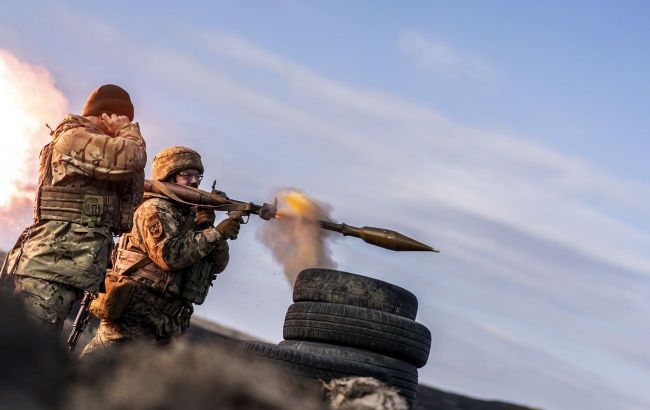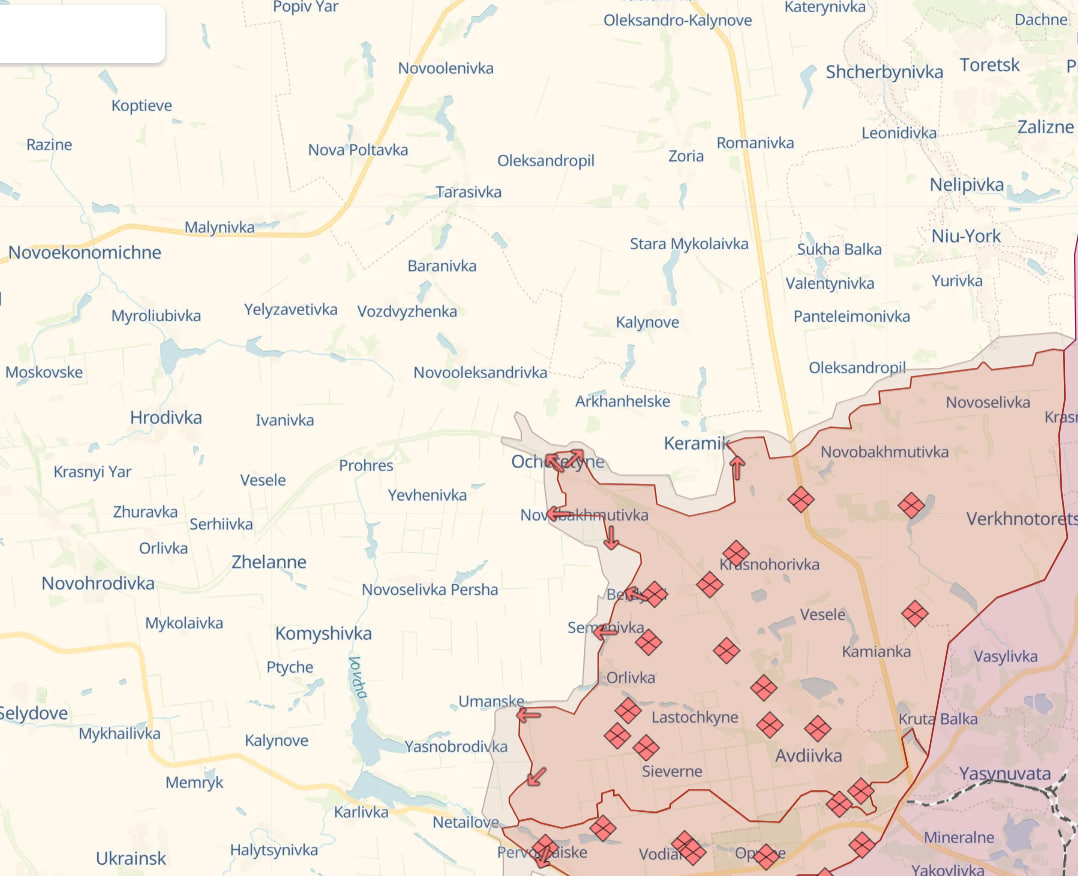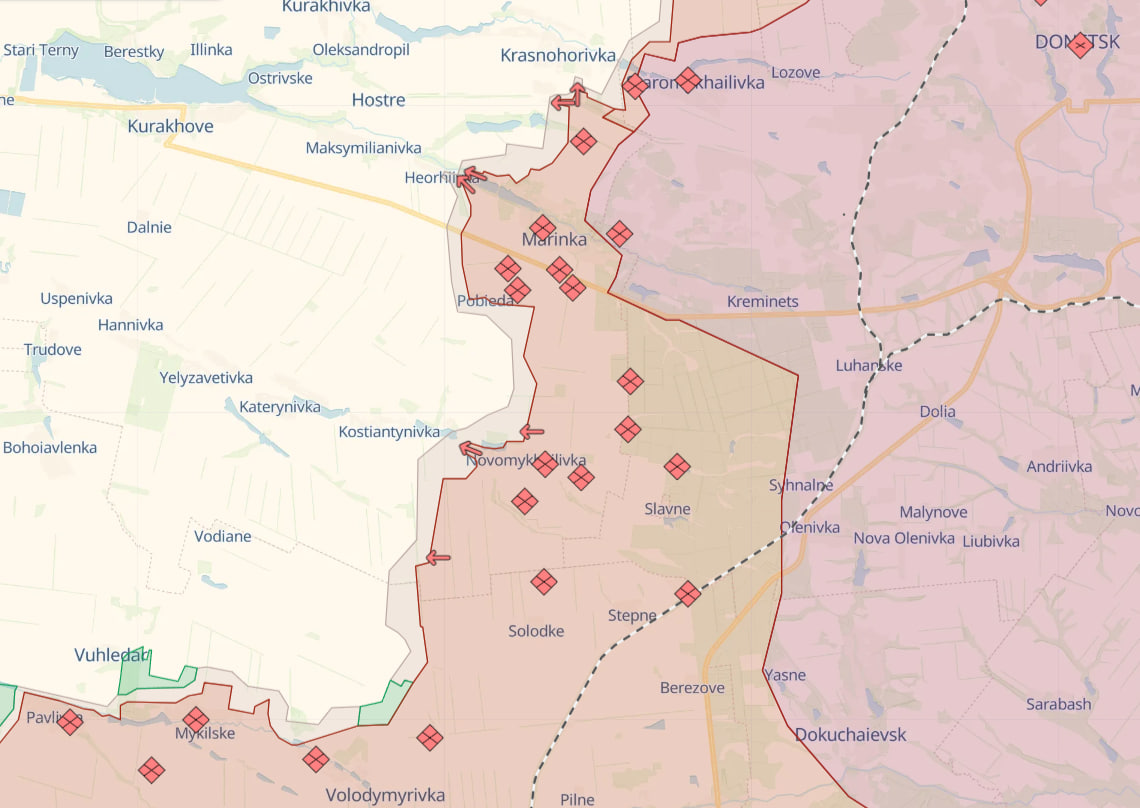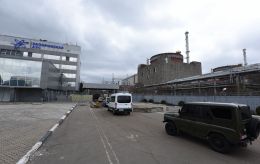Russia steps up offensive in east of Ukraine: Frontline developments and Kremlin's goals
 Ukrainian troops are trying to hold their ground in three areas in the east (GettyImages)
Ukrainian troops are trying to hold their ground in three areas in the east (GettyImages)
Russian forces show no signs of slowing their advance in eastern Ukraine, with the most intense situation currently unfolding on three fronts, all within Donetsk region. A detailed analysis of the frontline by military-political observer Uliana Bezpalko sheds light on the unfolding developments.
Data and maps from sources like DeepState, Liveuamap, and ISW have been utilized in the preparation of this report.
Content:
Kramatorsk direction: Chasiv Yar-Kostiantynivka
Avdiivka-Pokrovsk direction: Threat to three areas
Maryinka direction: Kurakhovo and Vuhledar
Russian forces have managed to seize the initiative on the frontline for several months now. Since September, they have been advancing with varying intensity on different fronts, ranging from Kupiansk to the Zaporizhzhia region.
The situation remains relatively unchanged on the Kupiansk front. In the northeast, the adversary is currently focusing its efforts primarily on the Lyman direction, attempting to displace Ukrainian units beyond the Chornyi Zherebetz River, near the administrative borders of Luhansk region, as well as Terny and Yampolivka.
In the south, the enemy aims to reclaim positions lost during last year's Ukrainian offensive on the Melitopol and Berdiansk fronts. To achieve this, Russian forces persistently attempt to break through to Robotyne and have renewed attacks near Staromaiorsk, in the vicinity of the so-called Vremiivka bulge.
However, the most complex situation remains in the east. It is likely that the Russians are preparing for a larger summer offensive, during which they intend to advance either towards the Kramatorsk conurbation or towards Kurakhovo and Vuhledar, or on both operational axes at the same time.
Kramatorsk direction: Chasiv Yar – Kostiantynivka
Chasiv Yar holds strategic importance for the occupiers as it serves as a transportation hub, providing access to the larger city of Kostiantynivka. This area is part of the Kramatorsk conurbation, which is one of Moscow's key objectives in terms of reaching the administrative borders of Donetsk region.
Russian forces are advancing on Chasiv Yar from multiple directions in the east: from the direction of Bohdanivka - Kalynivka, directly towards the eastern neighborhood of the city known as Kanal, and along the T0504 (N-32) road from Ivanivske. The intermediate objective of the adversary in the city is to reach the Siverskyi Donets-Donbas canal, which runs through its eastern part from north to south.

Liveuamap
One of the locations south of the city where the watercourse intersects with the T0504 (N-32) road is a focal point. Additionally, to support their efforts, the Russians seek to break through from the direction of Klishchiivka and Andriivka.
In their bid to capture Chasiv Yar, the adversary seems inclined towards a familiar tactic - encircling Ukrainian defense positions from the flanks. However, they have not been entirely successful in this endeavor yet. Thus, the enemy is resorting to frontal assaults in the eastern part of the city, which simultaneously increase their casualties.
Chief of the General Staff of the Armed Forces of Ukraine, Oleksandr Syrskyi, has said that the occupation army has been ordered to capture Chasiv Yar by May 9, a goal that currently appears unrealistic. Earlier, even before the decision of the Congress regarding aid to Ukraine, Defense officials believed that the risk of losing Chasiv Yar by the end of May was considerable. However, considering that our units on the frontline are expected to receive reinforcements in terms of weaponry and, most importantly, ammunition in a matter of weeks, this forecast may change somewhat.
For the enemy, advancing towards the Kramatorsk conurbation would be problematic without addressing another task - seizing the Siversk area, which is essentially wedged into the Russian defense lines. The fact that they are indeed considering such plans is evidenced by their increased activity towards Bilohorivka, Rozdolivka, and Vyiimka.
Avdiivka-Pokrovsk direction: Threat to three areas
The adversary aims to reach and consolidate positions along the Keramik - Ocheretyne - Umanske line on this front, where our defense forces hold positions. To achieve this, the occupiers are advancing on several populated areas along a 20-kilometer stretch.
Despite losses suffered in Avdiivka, the enemy is attempting to maintain the momentum of their advance on this front, apparently fearing that additional time will allow for the reinforcement of Ukrainian defenses. Consequently, breaching these defenses after a pause may become increasingly challenging.
 DeepState Map
DeepState Map
The greatest pressure from the Russian army falls on the village of Ocheretyne, where battles are raging and the enemy has managed to capture the local railway station. Overall, the Russian daily advancement here measures in hundreds of meters.
The objective of the occupiers in this area is to advance either towards Pokrovsk or towards the T0504 (N-32) highway, where it intersects with the N-20 highway. It is quite likely that the Russians will opt for both options simultaneously. Both align with the general logic of the enemy's actions on other operational axes - farther north in the area of Chasiv Yar and farther south in the Maryinka-Kurakhove area.
From the Pokrovsk direction, the Russians could pose a threat of encircling Kurakhove and Vuhledar from the north, as well as reaching the outskirts of Kostiantynivka - part of the Kramatorsk conurbation, creating a risk of semi-encirclement of the Toretsk defense district from the southwest.
However, capturing Ocheretyne alone is insufficient for this purpose - the enemy needs to break through here with a broader front to mitigate the risk of flanking attacks from Ukrainian forces. Hence, the occupiers are attempting simultaneous advances towards Novokalynove, Novobakhmutivka, Soloviove, Berdychi, and Semenivka.
Maryinka Direction: Kurakhovo and Vuhledar
In the Maryinka area, the Russians are also attempting to advance on several populated areas simultaneously - Krasnohorivka, Heorhiivka, Novomykhailivka, and farther north from Pervomaiske to Nevelske.
According to open-source data, Novomykhailivka village is almost entirely occupied by the Russians. Therefore, the next target for the enemy in this area will likely be Kostiantynivka village. Battles are already ongoing in Krasnohorivka, but the enemy has not yet managed to break through in Heorhiivka.

DeepState Map
The key objective for the Russians on this front is an attempt to encircle the town of Kurakhove, which, in turn, would pave the way for an advance towards the town of Vuhledar from the north. A more overarching goal is the "clearing out" of the entire Vuhledar "encroachment" of Ukrainian forces. The increased Russian activity near Vuhledar, particularly near Pavlivka and Mykilske, indicates such a plan. Previous attempts by the occupiers to advance on this town only from the south have ended in defeat.
***
All described tasks are not easy for the Russians and are not inevitable. The main reason for the relatively swift advancement of the enemy on the Pokrovsk direction after the occupation of Avdiivka, ultimately, as on all other sections, is the shortage of ammunition and combat kits for air defense in Ukrainian forces. With the shift in US assistance, the situation regarding ammunition is expected to improve. And this should somewhat stabilize the front line in the coming weeks.
However, Russian forces are noticeably getting exhausted as well. Currently, they are trying to exploit our equipment gap as much as possible before more active assistance begins to arrive from partners. But even after that, it will become very problematic for them to advance simultaneously on several operational axes.

